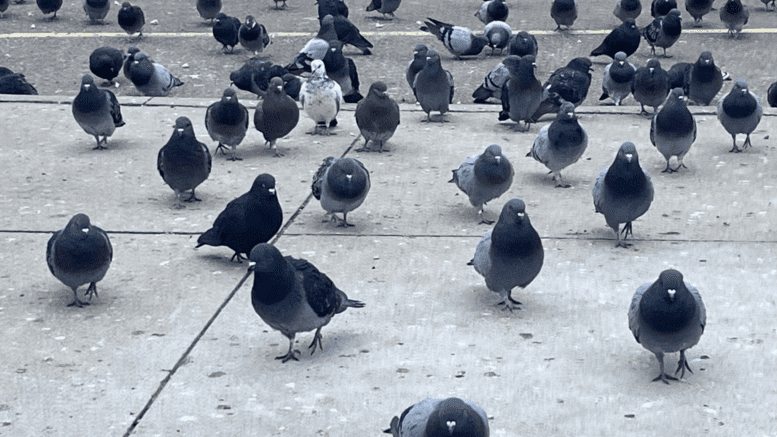The city of Toronto is placing pigeon feeders laced with birth control at select locations in an attempt to control the birds’ booming populations.
The city’s plan for pigeon birth control is said to decrease population by 50 per cent annually.
Toronto’s pilot program began in 2023. There are currently four feeders containing bait that acts as a pigeon contraceptive throughout the city. One of them is in Beaches-East York.
The contraceptive is OvoControl, which is produced by Innolytics LLC, a company based in La Quinta, California. It started out as a treatment for chickens suffering from an intestinal disease.
But the ingredient nicarbazin was also found to interfere with the hatchability of chicken eggs.
“About 20 years ago we got the idea that maybe we could use that unwanted side effect in chickens as something useful in pigeons,” Innolytics CEO Erick Wolf said in an interview.
“That’s where (the idea) came from. Serendipity.”
OvoControl is currently being used in countries throughout the globe, some of which include Spain, Australia, and Mexico. They are currently working on registrations in the Middle East and South Africa.
This contraceptive is considered a more humane alternative to methods of deterring pigeons than those used in the past, Wolf said.
“The most common practice for too many pigeons in Canada, just like in the United States, is to trap and euthanize them. You shoot them or you poison them,” he said.
“None of these are particularly attractive in an urban area.”
OvoControl has been advocated for by the Humane Society of the United States, The Royal Society for the Prevention of Cruelty to Animals, and the Animal Alliance of Canada for its humane and practical methods of decreasing pigeon populations over time.
There have been various case studies that prove its effectiveness, including one involving Pima Community College in Tucson, Ariz., where the number of pigeons dropped from 200 to five over two years.
Even though transit stops and subway stations can be popular hangouts for pigeons, the TTC is not considering the same method.
“We manage the pigeon population both proactively and reactively. Proactively we do things like, place spikes to deter things like (nesting at stations),” said Toronto Transit Commission spokesperson Stuart Green.
Green was unaware of the birth control feeders and stated that the TTC has not looked into this method of prevention thus far. Their approach is to make stations as “unwelcoming as possible” for the birds to prevent health hazards and slip-and-fall accidents.
“We have to do a lot of cleanup obviously when they make a mess.”
When asked about OvoControl as a method of deterring pigeons from transit systems, Wolf said it’s possible, but it takes work.
Cities can represent “challenging geography for the technology” as pigeons fly in flocks, he added.
For transit systems to effectively prevent nesting, they must be able to attract an entire flock.

